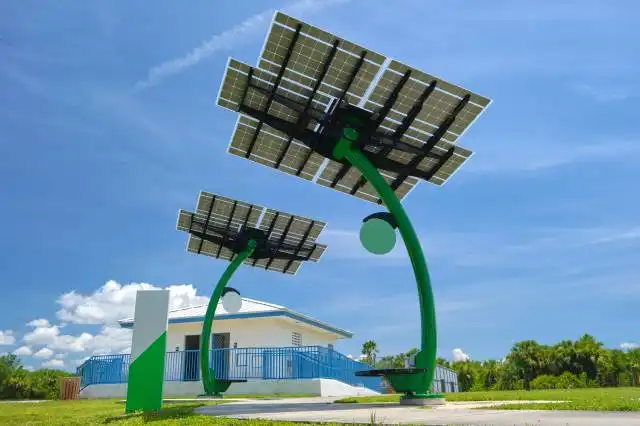Start a Greenhouse Business
Cultivate Your Passion: Transforming Sunshine into Green Bills with a Greenhouse Business
| Updated


GREENHOUSE BUSINESS
If you've got a love for plants and a bit of a green thumb, a greenhouse business could be your perfect venture! This type of business involves growing fruits, vegetables, and flowers in a controlled climate, making every day feel like Spring. This is a lucrative business venture that combines passion with profit. Quench the world's thirst for fresh produce while your greenhouse neatly captures the sunshine and converts it into green bills!
Jump to Business Plan
RELATED BUSINESS IDEAS
Browse ALL Sustainability & Eco-Friendly Initiatives Business Ideas
Discover Your Perfect Domain
Unlock the door to your online success with our hand-picked selection of premium domain names. Whether you're starting a new venture or rebranding an existing one, the right domain can set the tone for your digital presence. Browse through our curated list, each with its unique potential to enhance your brand's visibility and credibility.
GREENHOUSE MINI BUSINESS PLAN
This a quick reality check to help you identify the strengths and weaknesses of your business concept before you dive in.
Expected Percent Margin:
- Gross Margin: 50-70%
- Net Profit Margin: 20-30%
Earnings Expectations:
- Daily Earnings: $100 - $300
- Weekly Earnings: $700 - $2,100
- Monthly Earnings: $3,000 - $9,000
- Annual Earnings: $36,000 - $108,000
Actions to Hit Those Numbers:
Infrastructure:
- Initial Investment: Around $25,000-$50,000 for greenhouse establishment and initial plant investment.
- Routine Maintenance: Budget around $200-$500 a month
Plant Selection and Growth:
- Diverse Selection: Grow a variety of plants to cater to different customer needs and preferences.
- Sustainable Practices: Implement organic and sustainable farming practices to attract eco-conscious customers and also for long-term sustainability.
Marketing and Customer Acquisition:
- Social Media: Regular posting on social platforms targeting gardening enthusiasts.
- Local Advertising: Participate in local events or farmer's markets.
Sales and Customer Experience:
- Open Hours: Open 6 days a week for local customers. Consider an online shop to provide 24/7 service.
- Customer Experience: Train staff in customer service and product knowledge to provide high-quality experience.
Cost Control:
- Cost of Utilities: Implement cost-saving measures such as rainwater collection and solar power to decrease utility costs.
Business Operations:
- Transaction Volume: Aim for at least 10-20 plant sales per day.
Please note these are generalized estimations and can vary depending on location, species of plants chosen, seasonality, and the specific strategies of the business. Always consult with a financial advisor for personalized advice.
NOT WHAT YOU HAD IN MIND? Here are more ideas



Browse ALL Sustainability & Eco-Friendly Initiatives Business Ideas
Grab Your Business Website Name
Before you get caught up in the whirlwind of setting up your business, invest in a domain name. It's a small but significant step that lays the foundation for your brand and makes it easier for customers to find and trust you. Just like you wouldn't build a house without securing the land first, don't build a business without securing your domain name.
"Why? Can't that wait?" Here's why it shouldn't
Step 1: Determine if Starting a Greenhouse Business is the Right Endeavor
Breakdown of Startup Expenses
Starting a greenhouse business requires a significant amount of capital. The startup expenses will include the cost of the land, building materials, and equipment. Additionally, you will need to factor in the cost of labor, insurance, and any other miscellaneous costs. It is important to have a detailed budget and to make sure that you have enough money to cover all of the startup costs.
Breakdown of Ongoing Expenses
Once the business is up and running, there will be ongoing expenses that must be taken into consideration. These expenses include the cost of supplies, labor, and utilities. Additionally, you will need to factor in the cost of marketing and advertising. It is important to have a detailed budget and to make sure that you have enough money to cover all of the ongoing expenses.
Examples of Ways to Make Money
There are a variety of ways to make money with a greenhouse business. You can sell plants, flowers, and other products directly to customers. Additionally, you can offer services such as landscaping, design, and maintenance. You can also partner with other businesses to provide plants and flowers for special events. Finally, you can also offer classes and workshops to teach people about gardening and horticulture.
Step 2: Name the Business
- Brainstorm a list of potential names.
When brainstorming potential names for the business, it is important to consider the type of business, the target market, and the overall mission of the business. It is also important to consider the connotations of the words used in the name, as well as the length of the name. It is helpful to brainstorm a list of potential names that could be used for the business. This list should include words that are meaningful to the business, as well as words that are catchy and memorable. Additionally, it is important to consider if the name is available to be trademarked and if the domain name is available for the business.
- Research the competition.
It is important to research the competition to ensure that the name chosen for the business is unique and stands out from the competition. Researching the competition can also help to identify potential names that could be used for the business. Additionally, researching the competition can help to identify potential names that should be avoided in order to differentiate the business from the competition.
- Consider the mission of the business.
When choosing a name for the business, it is important to consider the mission of the business. The name should reflect the mission of the business and should be meaningful to the business. Additionally, the name should be memorable and should be something that potential customers can easily remember.
- Get feedback from potential customers.
Getting feedback from potential customers is an important step when choosing a name for the business. Potential customers can provide valuable insight into what names they think would be most effective for the business. Additionally, potential customers can provide feedback on which names they think would be most memorable and which names they think would be most effective for the business.
- Check if the name is available.
Once a list of potential names has been created, it is important to check if the name is available to be trademarked and if the domain name is available for the business. Checking to see if the name is available is an important step in the process, as it ensures that the business will be able to use the name without any legal issues. Additionally, it ensures that the business will be able to use the domain name for its website.
Step 3: Choose a Location
- Climate: The climate of the chosen location should be suitable for the types of plants that will be grown in the greenhouse.
- Accessibility: The location should be easily accessible to customers, suppliers, and other necessary resources.
- Space: The greenhouse should have enough space to accommodate the necessary equipment, as well as any additional space needed for future expansion.
- Cost: The cost of the chosen location should be within the budget of the business.
When choosing a location for a greenhouse business, there are several factors to consider. Firstly, the climate of the chosen location should be suitable for the types of plants that will be grown in the greenhouse. For example, if the greenhouse will be growing tropical plants, then the location should have a warm climate. Secondly, the location should be easily accessible to customers, suppliers, and other necessary resources. This will help ensure that the business can run smoothly and efficiently. Thirdly, the greenhouse should have enough space to accommodate the necessary equipment, as well as any additional space needed for future expansion. Lastly, the cost of the chosen location should be within the budget of the business. It is important to consider the long-term costs of the location, such as taxes, insurance, and utilities, to ensure that the business remains profitable. Additionally, it is important to research the local zoning laws and regulations to ensure that the chosen location is suitable for a greenhouse business.
Step 4: Obtain Necessary Licenses and Permits
Before starting a greenhouse business, it is important to research the type of licenses and permits required in the area. Depending on the size and scope of the business, different types of licenses and permits may be needed. For example, a business selling plants may need a nursery license, while a business selling produce may need a food handler’s license. Additionally, a business may need a permit to operate a greenhouse, as well as a permit to sell plants and produce. It is important to research the specific requirements in the area to ensure compliance with local regulations.
How to Obtain Licenses and Permits
Once the necessary licenses and permits have been identified, the next step is to obtain them. This can be done by contacting the local government office responsible for issuing the licenses and permits. The application process will vary depending on the type of license and permit needed. In some cases, the application process may require additional documentation, such as proof of insurance or a business plan. Additionally, the applicant may need to pay a fee for the license or permit. Once the application is approved, the business can begin operating legally.
Benefits of Obtaining Licenses and Permits
Obtaining the necessary licenses and permits is an important step in starting a greenhouse business. Having the proper licenses and permits will ensure that the business is operating legally and is in compliance with local regulations. Additionally, having the proper licenses and permits can help to protect the business from potential legal issues. Furthermore, having the proper licenses and permits may also help to attract customers, as it demonstrates that the business is legitimate and trustworthy.
Step 5: Develop a Business Plan
Introduction: A business plan is an important document that outlines the goals and objectives of the business, as well as the strategies for achieving them. It is essential for any business, especially a greenhouse business, to have a well-thought-out business plan. The introduction should include a brief overview of the business, its goals, and the strategies that will be used to achieve them.
Market Analysis: A market analysis is a critical component of the business plan. It should include research on the current market conditions, the target market, and the competition. This research should provide insight into the potential success of the business and help to identify any potential risks.
Financial Plan: The financial plan should include an analysis of the startup costs, ongoing expenses, and potential sources of revenue. It should also include a cash flow projection and a break-even analysis. This will help to ensure that the business is financially viable and will be able to cover its expenses.
Operational Plan: The operational plan should include a detailed description of the operations of the business, including the processes and procedures that will be used. It should also include a timeline for the implementation of the plan.
Management Plan: The management plan should include a description of the roles and responsibilities of the management team, as well as a plan for recruiting and training new staff. It should also include a plan for monitoring the performance of the business and making necessary adjustments.
Conclusion: The conclusion should summarize the key points of the business plan and provide an overview of the potential success of the business. It should also include a plan for future growth and development.
Step 6: Secure Financing
Securing financing is an important step in starting a greenhouse business. There are a variety of sources of financing available, including traditional bank loans, venture capital, and angel investors. Bank loans are the most common source of financing, but they can be difficult to obtain. Venture capital and angel investors are more willing to invest in a new business, but they typically require a larger stake in the business. It is important to research all available sources of financing and determine which one is the best fit for the business.
Business Plan
Before applying for financing, it is important to create a business plan. A business plan is a document that outlines the goals and objectives of the business, as well as the strategies and tactics for achieving those goals. It should include a detailed budget, a marketing plan, and a description of the products and services offered. The business plan should also include financial projections, which will help potential investors understand the potential of the business.
Financial Statements
In addition to a business plan, potential investors will want to see financial statements. Financial statements provide an overview of the financial health of the business, including income statements, balance sheets, and cash flow statements. These documents provide an in-depth look at the business’s financial situation and can help investors make an informed decision about investing in the business.
Pitch
Once the business plan and financial statements are complete, it is time to make a pitch to potential investors. The pitch should include an overview of the business, the products and services offered, and the financial projections. It should also include a description of the management team and their qualifications. The pitch should be concise and persuasive, and should demonstrate the potential of the business.
Step 7: Purchase Equipment and Supplies
When starting a greenhouse business, there are several types of equipment and supplies that must be purchased. These include greenhouses, benches, irrigation systems, and tools. Depending on the type of business, additional supplies such as pots, soil, and fertilizers may also be necessary. It is important to research the different types of equipment and supplies available to determine which ones are best suited for the business.
Where to Buy Equipment and Supplies
Once the types of equipment and supplies needed have been determined, the next step is to find a reliable supplier. Many greenhouse businesses purchase their equipment and supplies from local nurseries or garden centers. However, there are also a number of online suppliers that offer a wide variety of products at competitive prices. It is important to compare prices and read customer reviews before making a purchase.
Cost of Equipment and Supplies
The cost of equipment and supplies can vary greatly depending on the type and quantity of items purchased. It is important to create a budget and stick to it when purchasing equipment and supplies. It is also important to factor in the cost of shipping and taxes when calculating the total cost.
Maintenance and Upkeep
Once the equipment and supplies have been purchased, it is important to maintain and upkeep them properly. This includes regularly cleaning and inspecting the equipment and supplies, as well as replacing any parts that may be worn or damaged. It is also important to store the equipment and supplies in a safe and secure location to prevent damage or theft.
Step 8: Market the Business
Utilize Social Media: Social media is a great way to reach potential customers. Create a website, blog, and social media accounts to promote the business and its services. Post regularly and engage with followers to build relationships and trust.
Take Advantage of Local Resources: Local newspapers, radio, and television stations are great resources for marketing the business. Create press releases and contact local media outlets to get the word out about the business.
Participate in Local Events: Participate in local events such as farmers markets, festivals, and trade shows to promote the business. Have flyers, business cards, and other promotional materials available to hand out to potential customers.
Network: Attend local business meetings and network with other business owners. This is a great way to make connections and build relationships with potential customers.
Offer Discounts: Offer discounts and promotions to attract new customers. This will also help to create loyalty and encourage repeat customers.
Tips for Successful Marketing
Have a Clear Message: Make sure the message is clear and concise. It should be easy to understand and explain what the business offers.
Focus on Benefits: Focus on the benefits of the services and products the business offers. Explain how the business can help customers solve their problems.
Be Consistent: Consistency is key when it comes to marketing. Make sure to post regularly and keep the message consistent across all platforms.
Track Results: Track the results of the marketing efforts. This will help to determine what strategies are working and which ones need to be improved.
Ask for Feedback: Ask customers for feedback and use it to improve the business. This will help to build relationships and loyalty.
Step 9: Manage the Business
Establish a business plan: A business plan is essential for any business, and a greenhouse business is no exception. It should include a comprehensive overview of the business, including the goals, objectives, and strategies for achieving those goals. It should also include a financial plan, which should include a budget, a cash flow statement, and a profit and loss statement. Additionally, it should include a marketing plan, which should include an analysis of the target market, a description of the products and services, and a plan for reaching the target market.
Hire staff: Hiring staff is an important part of running a successful greenhouse business. When hiring staff, it is important to consider their experience and qualifications, as well as their ability to work in a team environment. It is also important to consider the cost of hiring staff, as this can be a significant expense. Additionally, it is important to consider the legal requirements for hiring staff, such as the minimum wage and other labor laws.
Develop a customer service plan: Customer service is an important part of any business, and a greenhouse business is no exception. A customer service plan should include a description of the services offered, a plan for responding to customer inquiries, and a plan for resolving customer complaints. Additionally, it should include a plan for tracking customer feedback, such as surveys and customer reviews.
Monitor the business: Monitoring the business is an important part of managing a greenhouse business. This includes tracking sales, expenses, and customer feedback. It also includes tracking the performance of staff and making sure that the business is meeting its goals and objectives. Additionally, it is important to monitor the competition, as this can provide valuable insights into the market and help the business stay competitive.
EXPLORE MORE CATEGORIES
Browse ALL Business Idea Categories
TAKE THE NEXT STEPS










